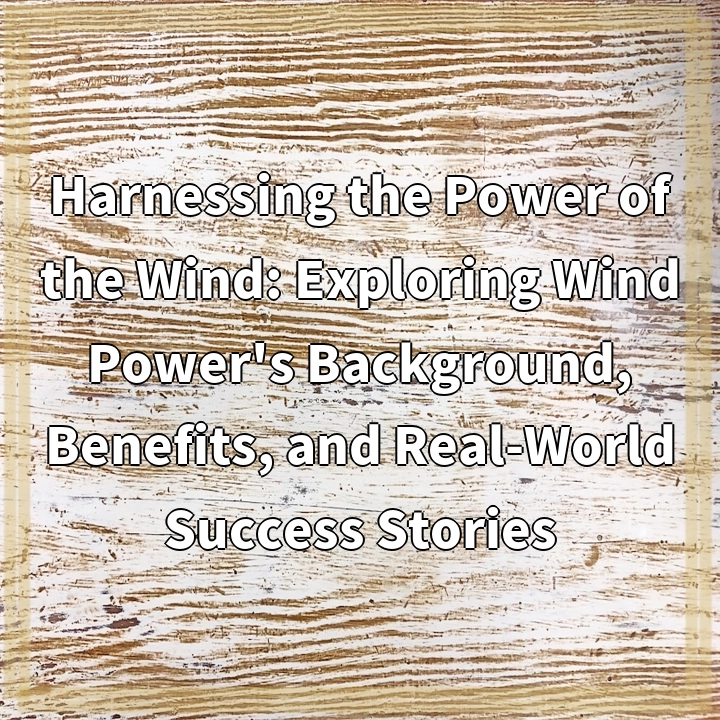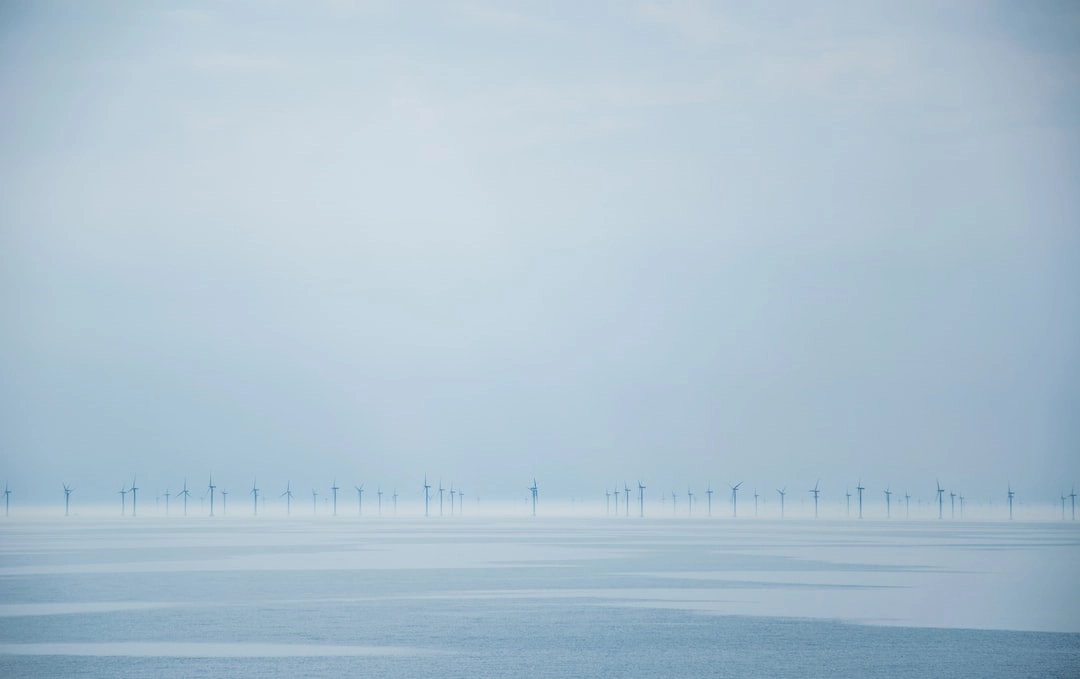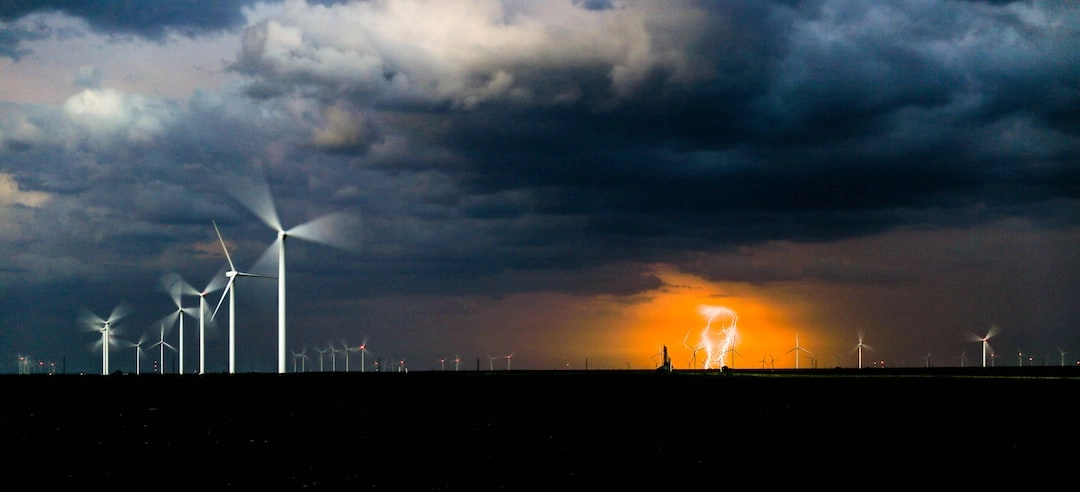
What is Wind Power?
Wind power is a renewable energy source that harnesses the power of the wind to generate electricity. It involves the use of wind turbines, which are large structures with rotating blades that convert the kinetic energy of the wind into mechanical energy. This mechanical energy is then transformed into electrical energy through a generator. Wind power is a sustainable and clean form of energy production that does not emit greenhouse gases or contribute to air pollution.
Real-World Problems Associated with Wind Power
While wind power offers numerous benefits and is an important part of the transition to a low-carbon future, there are also real-world challenges that need to be addressed. These problems include:
1. Intermittency:
One of the main challenges of wind power is its intermittent nature. Wind energy production is dependent on wind availability, which can vary throughout the day and across seasons. This intermittency can make it difficult to match energy supply with demand, especially during periods of low wind activity. Advances in energy storage technologies and grid management systems are being developed to address this issue and ensure a more consistent and reliable power supply.
2. Visual and Noise Impact:
Wind turbines, especially when grouped together in wind farms, can have visual and noise impacts on surrounding communities. Some people find the sight of wind turbines to be visually intrusive, while others are concerned about the noise generated by the rotating blades. Proper site selection and community engagement are important in mitigating these concerns and ensuring the support and acceptance of wind power projects.
3. Wildlife and Environmental Impacts:
Wind turbines can pose risks to bird and bat populations, particularly during migration or in areas with high concentrations of these species. Collision with turbine blades and disruption of habitat are some of the concerns raised in relation to wind power. Effective research, monitoring, and mitigation strategies are essential to minimize the impact on wildlife and their ecosystems.
4. Infrastructure and Transmission Challenges:
Wind power requires an extensive infrastructure, including the installation of wind turbines, transmission lines, and substation facilities. The development of this infrastructure can have environmental and social impacts, such as land use changes and disruption to local communities. Efficient planning, coordination, and investment in grid infrastructure are necessary to optimize the integration and transmission of wind energy.
5. Public Perception and Opposition:
There can be public opposition and skepticism towards wind power projects, with concerns ranging from perceived negative visual impacts to potential health effects. Misinformation and lack of awareness about the benefits and safety of wind power can contribute to this opposition. Engaging with communities, providing accurate information, and addressing concerns are important in building public support and acceptance for wind power initiatives.
In conclusion, while wind power is a promising renewable energy source with numerous benefits, it is crucial to address the real-world problems and challenges associated with its implementation. Continued research, technological advancements, community engagement, and careful planning are essential to maximize the potential of wind power and ensure its sustainable contribution to our energy needs.

Solutions to Real-World Problems Associated with Wind Power
Addressing the challenges and concerns surrounding wind power requires a multifaceted approach. Here are some potential solutions to the real-world problems associated with wind power:
1. Intermittency:
To mitigate the issue of intermittency, advancements in energy storage technologies, such as batteries and pumped hydro storage, can store excess wind energy for times of low wind activity. Additionally, integrating wind power with other renewable energy sources, like solar power, can create a more balanced and reliable energy mix.
2. Visual and Noise Impact:
Addressing visual and noise impacts involves careful site selection, considering community preferences and sensitivities. This can include locating wind farms in less populated areas or offshore where visual impact is minimized. Utilizing advanced turbine designs and technologies can also reduce noise levels, ensuring better acceptance and support from local communities.
3. Wildlife and Environmental Impacts:
To minimize wildlife and environmental impacts, rigorous research, monitoring, and mitigation strategies are essential. This can involve employing radar systems to detect migratory patterns and implementing measures such as bird-friendly turbine designs, lights-out policies during migration periods, habitat restoration, and offsetting programs.
4. Infrastructure and Transmission Challenges:
Effective planning and coordination are crucial to address infrastructure challenges. This includes optimizing wind turbine placement to minimize environmental and social impacts. Developing a robust transmission network to efficiently transport wind power from remote locations to areas of high demand is also vital. Strategic investments in grid infrastructure and modernization can improve the integration and management of wind energy.
5. Public Perception and Opposition:
Overcoming public opposition requires proactive community engagement and education. Providing accurate information about the benefits, safety, and economic advantages of wind power can help dispel misconceptions and build trust. Involving local communities in the decision-making process, addressing concerns, and offering opportunities for shared benefits, such as community-owned wind projects, can foster support and acceptance.
By implementing these solutions and approaches, we can harness the full potential of wind power while addressing the real-world problems and challenges associated with its implementation. This will help transition towards a more sustainable and renewable energy future.















